Unit 1: Portrait of a Word
Ümid
It’s no surprise that “luck” is something we venture out far and beyond for, as some occurrences in our life are beyond our understanding and command. The desperation to find a four-leaf clover or chase the end of the rainbow are mere examples of this notion. When we were young we would stare into the deep abyss of the starry night hoping to wish upon a star, we would eagerly blow out the cake candles on our birthday, or we’d make a wish at exactly 11:11 if we were lucky enough to spot it. In whichever way it was, a chance to wish for something out of hope brought us joy. This simple idea keeps many of us pushing onward. It is as if we carry a fire within us that allows us to glimpse ahead, stare into fate, and keep trying. Many may assert it’s hope, a yearning for a desirable outcome. Yet I think it’s much more than just a yearning, but having faith in fate. Ultimately, hope can die and evanesce, but when you have faith in hope, it can never die. This beautiful sentiment is (امید) ümid. The word ümid is of Azeri-Turkish origin and derived from Middle Persian. Ümid isn’t about being optimistic, but about faith. It means to have faith in yourself, faith in your future, faith in your journey, and faith in the things that go amiss.
I recollect the day when I first heard this word. Once battling an eating disorder, I couldn’t catch a glimpse of recovery and slowly felt as if I was turning into dust, soon to be blown away. My body had become fatigued and weary, if someone were to touch it, like a sandcastle it would crumble and disperse into the air. All my efforts to ameliorate me had taken a toll on me, and eventually, bit by bit, I lost myself by ignoring the things I liked to do. I had become distant and unfamiliar to my family, friends, and even myself. Then one night, as I lay sprawled on my bed staring into the void, I felt the chillness of the night as the walls vibrated from the coldness. I heard the leaves knocking on my window, the chatters of the street, and the rain hitting the pavement. Then suddenly I felt the bed plunge. My mom sat beside me and took my hand in hers. Her face was radiant, yet her expression was teary. She smiled and comforted me, her hand stroking me assiduously. I felt my frigid body begin to warm up. I sat up and moved closer to her to lay my head against her shoulder. As I breathed, I caught subtle notes of sweet cherry blossoms and cedarwood probably coming from her perfume. I recalled her spraying it on that morning and placing the baby pink bottle back on her dresser. Afterward, she started to talk and reassure me that all I needed was ümid. As I listened, I felt darkness start to engulf us as the sky lost its color. Amidst the darkness, I sat and listened to my mom. At the edge of hope, I promised her that I was going to have faith, either way, I had nothing to lose.
So I thought for a long time about the person I am and how I’ve been to myself. I thought about how I wouldn’t change one thing about any of my family members. I thought about how I would love them no matter what they looked like. I thought about how they were more than just a number on a scale, and I wasn’t any different. It was that day when I realized I was worthy just as how I was. Brimming with hope, I decided to let go, to bounce back, to live healthier, to accept myself for who I was, and to never look back. I knew it would be difficult but this time I had something to hold on to.
You see when a person has absolutely nothing to hold on it, they still have hope be it subconscious or deliberate. Hope prevents one from losing themselves mentally or physically because it will always stay beside you offering endless support. During that time when I had nothing giving me hope, I decided to focus on self-growth and channel my psyche toward the divine. I planted my trust in faith deeply, so that whatever happens, I was going to face it, whether it be one of my worst fears.
I don’t know whether it was fate that was testing me or finding a way to make me stronger but one day arrived when I had to face my most alarming dread. My father; the liveliest and most vibrant person I know had started to grow feeble. It was almost as if someone had unwinded him and slowly he had become despondent and lifeless. No one knew what was going on or why it was transpiring. Then one day as I was doing some work on my computer, I saw his monotonous and dim body lurk over, sit next to me, and smile. It was upsetting to see him like this, especially when he tearily declared that his body was starting to feel numb and some parts he was losing control over. I was shocked, in disbelief, and unable to say anything. My face gave away my reaction, and he asked, “nothing will happen right?”. His face showed uncertainty and barely any hope. I firmly asserted that nothing would happen to him, all we needed to do was get him checked. Even if I was trembling from the inside, I knew I couldn’t possibly let go of hope.
We eventually got him checked in and waited anxiously for the outcome. Time went by slowly as we sat at the hospital. I vividly remember hearing the clock ticking, the cars stumbling on the poorly constructed road, some were nervous and ran slow, the others were mischievous and sprinted towards the road. As I tried to distract myself by listening to the sounds around me, I grew worrisome. They had been observing him for four hours but hadn’t updated us on any matter. As time went by me, my brother, and my mom grew frantic. We all prayed and tried to think and hope for the positive. Then afterward the doctor reported that the matter wasn’t anything serious. Relieved and joyous, I reflected how what had been so hard at first for all of us had vanished by us as it had never been there.
Ümid. Maybe just an austere word, yet it taught me patience, it showed me the beaming light beyond it all, and it carried me with the wind and had the serene breeze take away my troubled thoughts. I have come to realize the importance of the existence of myself and everyone around me. There were times when I had wanted to end it all, but the times when I saw everything coming to an end, were when I was proven wrong because what I had thought was the end was, was simply the beginning.
Hold on to that brink of faith, whether it be in the divine, in someone you know, in yourself, or in anything because that is ümid. Ümid is pulchritudinous.
Unit 2: Feature Article
Contemporary skincare ingredients and practices date back to antiquity?
By Salomee Khawja
Fungal acne was the bane of Yosef Aydin’s existence as it would emerge periodically but never fully went away.
“I tried all sorts of medications and lotions, but nothing seemed to work,” Yosef, a New York City high schooler, told me. “However, a miracle came by when my grandmother told me her ancient secret, honey. I hadn’t known that my ideal skin was waiting for me in the cabinet.”
Throughout the world, innovations have led Man to resort to Mother Nature’s raw elements. Not only honey but most of our health and wellness antidotes have been more accessible than we have contemplated.
Honey, nature’s most decadent creation, not only is ambrosial, it’s a powerful antioxidant and healer. It’s been used in skin care regimens and treasured for its curative and beautifying properties ever since the dawn of knowledge. Archeologists found that honey was the predominant ingredient in recipes for healing ointments in ancient Sumerian clay tablets.
The word goes around that Cleopatra used to bathe regularly in milk. After all, milk contains lactic acid which helps to gently buff away dead skin cells.
Furthermore, during the Ming dynasty in China, women used rice water to clear away imperfections and inhibit aging. This practice flourished due to the abundance of enzymes, amino acids, and antioxidants in rice.
All in all, skincare has been present for a long time in history, it just has a new name.
Skincare may be the trending cure for beautification, wellness, and health today but truth be told it shouldn’t be novel. Unfortunately, with millennia of knowledge shrouded, many are unaware that this practice has been around since the beginning of time. Furthermore, a substantial amount of ingredients found in contemporary skincare products dates back to antiquity. It’s invigorating to recognize that events of the past continue to prosper, and nothing is ever lost.
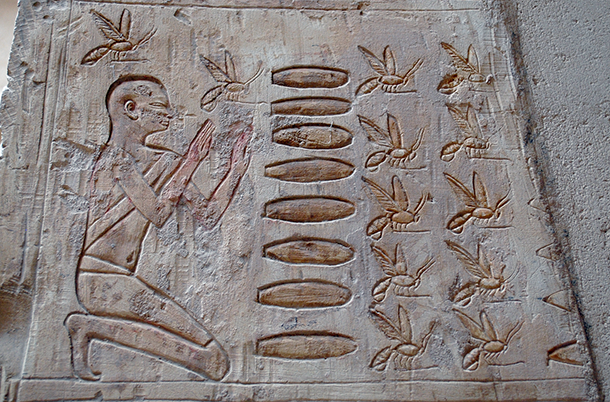
Egyptian Honey Beekeepers
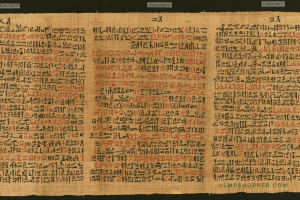
Ebers Papyrus
To begin with, one of the first practices of beautification was by the Egyptians, who valued and treasured honey in their medicinal and curative approaches. In the article entitled, “Secrets of the Mummy’s Medicine Chest”, James Peter Allen, an American Egyptologist, asserts that “the ancients treated broken arms, cuts, even facial wrinkles […] and they used methods as advanced as rudimentary surgery and a sort of proto-antibiotics.” (Pérez-Peña, 2) Although they didn’t have laboratories or research-based knowledge, they were well-equipped in handling such procedures. In fact, when the 4,000-year-old Egyptian papyrus (also known as the Ebers Papyrus) was found, it offered a depth of wisdom and was anointed as the world’s oldest known medical treatise. According to Allen, who also translated the papyrus, the Egyptians theorized and came to know profoundly about the functions of human anatomy and its cure, though they did not always comprehend it. As per, many of the recipes advise using honey, an antibacterial humectant, in conjunction with willow bark on open wounds, a natural painkiller that is chemically similar to aspirin that can help inflammation. Despite not knowing what bacteria was, they still used herbs and natural remedies to fight it off. Perhaps the most remarkable thing about this is that the practice hasn’t been forgone. Honey is still present in contemporary medicine and skincare products. Moreover, willow bark, known today as salicylic acid, is a common ingredient in modern-day skincare that helps with the alleviation of acne and irritation. On the whole, it’s heartening to acknowledge that years of insight have withstood the test of time.

Egyptian engraving of aloe vera
According to Dr. Alan M. Dattner, a Westchester County dermatologist, many of the colleagues whom he has worked with, recommend their patients’ medications as well as natural approaches to treat their skin. They assert that both approaches are equally significant and useful. In the article entitled, “With Herbs, a ‘Fuller Palette’ for Skin Care”, Dr. Dattner, remarks, “the traditional practice of topically treating dermatological conditions with plant-derived medicines predates the cultures of ancient Egypt and remains vital today.” (Jackson, 5) For example, psoriasis is a condition that causes a person’s skin to become red, itchy, and scaly. This skin disease is often treated with topical steroids, ointments, and sometimes with laser for severe cases. Yet, aloe vera, a standard beauty and health component used to soothe and heal the skin is a great alternative to these approaches. In a clinical study that consisted of patients with slight to moderate psoriasis, patients reported having felt better and were satisfied by the effects of applying aloe vera as a topical treatment. Unsurprisingly, the use of aloe vera was also found written on an uncovered papyrus, describing the plant as “the plant of immortality”. It was named by the pharaoh as the “elixir of eternal life”. It is said that Cleopatra used aloe vera on a daily basis.
Traditions as such are passed down by generations. Our innovations and knowledge have thrived because of our ancestors’ understanding and wisdom. Although we do not continue the archaic practices of our ancestors, it’s interesting to hear the legends of their time. In the article entitled “The Use of Plants in Skin-Care Products, Cosmetics and Fragrances: Past and Present” issued in the Cosmetics Journal 2018, “five thousand years before, the Sumerians, Assyrians, and Babylonians removed skin devils with mud, [ointment, bandages], and plants such as castor oil, anise, cinnamon, myrrh, and mustard.”(González-Minero, 1) In modern-day cosmetic engineering, these ingredients are formulated in various skincare and beauty products. However, nowadays people have access to options such as topical steroids, chemical exfoliants, prescription medication, and over-the-counter lotions and serums. On the surface, it seemed to be peculiar and an odd procedure of beautification. Coming from Assyrian descent, I found this statement bizarre yet amusing. Part of me couldn’t believe the information, so I questioned my grandmother to lessen my doubts.
“We didn’t have the products made today, but we tried everything to look our finest; well, some of us did,” she laughed.
“Myrhh was favored and helpful in reducing irritations all over the body. Your mom frequently got rashes, so I’d apply it to her skin, and after a while, she’d feel better. Pearl powder was another great element we used; it kept us looking youthful and fresh.”
When I asked her if she’d return to such practices, she answered no.
“With the abundance of inventions coming out these days, there is no need to go back to these methods. Simply remembering these methods keeps the practice alive.”
The experience of learning the approaches to beautification through someone of an older time is riveting. It’s a reminder that nothing is ever lost in the past. As long as we have memories of the past, the past lives on.

Contemporary Skincare Routine
At the end of the day, Man has come a long way with research and knowledge. Today we attain a plethora of resources to treat our conditions. So go forth, and use all the incredible skincare products you keep on your shelves. We do not need to regress to old practices, although one can if they desire to. Yet, the alikeness and resemblance of today’s approach to those done in antiquity is a reminder that we remain connected with our predecessors. While skincare is the new beauty trend and wellness movement, one should know that mother Earth initiated it at the beginning of time. Everything we know and attain today is granted due to the years of knowledge of the past. By good fortune, years of knowledge and practices have withstood with time. The parallels found in medicine and health open doors to much more information that is left to be found by intellectuals of the past.
The past dictates the future and the present is in flux.
References:
Jackson, Nancy Beth. “With Herbs, a ‘Fuller Palette’ for Skin Care.” The New York Times, The New York Times, 8 Dec. 1998, www.nytimes.com/1998/12/08/health/with-herbs-a-fuller-palette-for-skin-care.html?searchResultPosition=2.
Pèrez Peńa, Richard. “Secrets of the Mummy’s Medicine Chest.” The New York Times, The New York Times, 10 Sept. 2005, www.nytimes.com/2005/09/10/nyregion/secrets-of-the-mummys-medicine-chest.html?searchResultPosition=8.
González-Minero FJ, Bravo-Díaz L. The Use of Plants in Skin-Care Products, Cosmetics and Fragrances: Past and Present. Cosmetics. 2018; 5(3):50. https://doi.org/10.3390/cosmetics5030050
Reflection
Sitting down to write is the toughest task that has ever conquered me. I’d often find myself staring into the void, simply waiting for an idea, a token of inspiration, or even an austere utterance to come by me. It would take hours of endless ponderance and a series of distractions before I would eventually begin to write. Moreover, every writing process that I’d ever embark on would transpire in this same manner. Not only would it consume a large portion of my day’s time, but it would also make me aware of my inattentiveness. Nonetheless, the end result would always leave me awestruck and astounded by my composition. All the time and energy it took to create such a masterpiece would feel worthwhile when I’d see how beautiful the phrases flowed together. Like a flawlessly embellished scarf, the words would be knitted together. Yet, I’d still ponder, why couldn’t I have knitted this scarf much faster? Why did it take me an hour or two of nothingness before I had begun to write? I hadn’t known the answer then, but reflecting on it now, the culprit has always been ‘perfection’.
In any case, a strange urge and fear withheld me from writing any words that weren’t perfect. Fear gripped me that if I wrote down a word or phrase that was inadequate, I’d be doing injustice to my paper. For this reason, every sentence had to be perfect before I moved on to the next. As weird as it may sound, it was my way of keeping my composition pristine and appealing. However, what I failed to understand then was that every adventure has a rough beginning. Once a person starts meddling with minor and insignificant details of their journey to their final destination, they will never be able to appreciate the beauty of progression. Moreover, the idea is to saunter through your writing, relish the ways that it may advance, and think of the limitless ways you can shape and build your writing. For instance, once writing, I couldn’t decide on which part of my essay I needed to elaborate on. I had written: “Then one night, as I lay sprawled on my bed staring into the void, I felt the chillness of the night as the walls vibrated from the coldness.” Carefully recalling an experience, I crafted the sentence. Then I asked myself, should I elaborate, or do I move on? Was it okay for me to linger or would that be improper? It occurred to me that this was my story that I was sharing, so the only person who could answer those questions was me. I then decided to add the lines; “I heard the leaves knocking on my window, the chatters of the street, and the rain hitting the pavement.” I grew to understand that every composition can be shaped and embellished in any direction the writer wants. It could be informative or perhaps persuasive depending on what the intentions are. Still, the principle is to have a foundation built and then one can mold the language to their desire. Otherwise, the neverending writer’s block and desperation for perfection will continue to lurk to no avail.
Furthermore, my impression of writing has changed significantly ever since I started to reflect on the choices I make during the process. At first, I was enthralled by the idea of sounding sophisticated and honing a refined vocabulary. To me, writing was a blend of sophistication and classiness sprawled onto paper. However, when reading my compositions, I detected an appalling amount of arrogance and pretension. I became aware that my word choices didn’t dictate my intentions or purpose but rather a flamboyance. I’ve come to acknowledge that writing is a process, a long process, almost like a relationship. Hence, it’s necessary for a writer to understand his or her purpose for writing as they write. Understanding your writing is what makes you a scholar, because your purpose may change as you write, therefore, you may need to make adjustments. For example, when writing a feature article on the topic of ancient skincare, I wrote: “Unfortunately, with millennia of knowledge shrouded, many are unaware that this practice has been around since the beginning of time.” The word ‘shrouded’ seemed to be the best choice for this sentence. Other words such as ‘concealed’ would’ve been undesirable and offputting. This is because specific words, no matter if they are synonyms, can change the entire meaning of a sentence. All in all, when writing it’s best to be reflective of your choices. There have been many times where I had to make adjustments in my writing only because there was a better way of writing a sentence.
With so many rules and conditions in writing, the process becomes tough and monotonous. But I try to remember that the creation of any art piece always has a bare beginning. It takes a lot of devotion and embellishment for the piece to eventually glimmer. Moreover, that art piece doesn’t need a signature, for the viewer can distinguish the owner by recognizing the style and flare left behind. I find that as writers we shouldn’t feel discouraged about embarking on an ambitious trail, because that trail can be filled with captivating moments. Once sitting down to write an essay, I couldn’t help but feel lethargic and uninspired. I spiraled around my room, spied on my neighbors out the window, had a coffee break, and eventually started to write the dreaded essay. I wrote, “time went by slowly as we sat at the hospital.” Done. Now what? Afterward, the memories of that day came rushing into my mind. Thinking of the ways I could transcribe that event, I typed rapidly again, adding the sentence, “I vividly remember hearing the clock ticking, the cars stumbling on the poorly constructed road, some were nervous and ran slow, the others were mischievous and sprinted towards the road.” I chuckled to myself, realizing that all I had to do was to enjoy the process, and the writing will take care of itself. I prefer to write in solitary and amidst the dimness of my room. Sometimes even looking out my window and glancing at outsiders gives me an idea or a foundation to build upon.
In the end, writing isn’t about perfection but progression. As writers, we may or may not realize it, but with everything we write, we leave our signature. Therefore, we shouldn’t feel intimidated, instead just let go and appreciate the craftwork. In the future, I hope to carry on with this mindset so that I never feel discouraged.

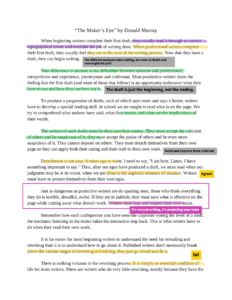
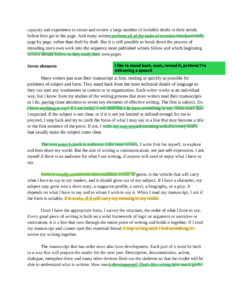
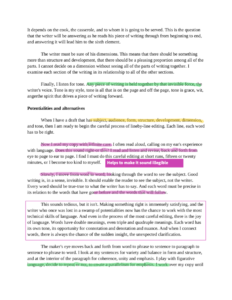
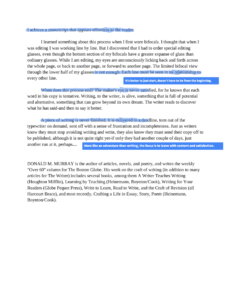




Recent Comments